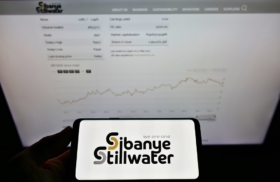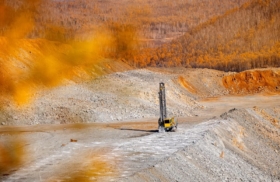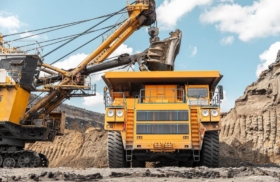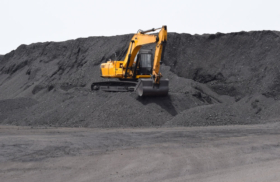
Current Nickel Price Trends The nickel market has seen significant volatility in recent months. As of early 2025, nickel prices have recovered slightly from the sharp downturn experienced in mid-2023, driven by oversupply and subdued demand in China. Benchmark prices on the London Metal Exchange (LME) have hovered around $16,000 to $17,500 per metric ton...
READ MORE
The Trump administration has moved to expedite federal permitting for U.S. mining projects, adding Resolution Copper in Arizona and several others to the Federal Permitting Dashboard as part of a broader strategy to strengthen domestic mineral supply chains. The dashboard, managed under the FAST-41 initiative, is designed to increase transparency and accountability in the permitting...
READ MORE
Australia’s government has announced plans to establish a $1.2 billion (USD 760 million) strategic reserve of critical minerals, aiming to reduce dependence on China and strengthen the country’s position in global supply chains. Prime Minister Anthony Albanese detailed the initiative on April 24, stating that the reserve will focus on 31 minerals vital for modern...
READ MORE
Nornickel, one of the world’s largest producers of nickel and palladium, maintained stable production in the first quarter of 2025, with only marginal declines in most key metals despite persistent headwinds in the global metals market. The company reported a 1.1% year-on-year decrease in nickel output to 41.6 thousand tonnes, a 0.4% dip in copper...
READ MORE
The U.S.-China trade war has intensified, with the Trump administration imposing a sweeping 104% tariff on Chinese goods. This escalation comes after Beijing refused to remove retaliatory levies on U.S. exports, prompting fears of further disruptions in global supply chains, particularly for critical minerals like lithium and rare earth elements. China dominates the global production...
READ MORE
U.S.-based GreenMet has entered a strategic partnership with Critical Metals Corp to develop the Tanbreez rare earth project in southern Greenland, aiming to reduce Western reliance on Chinese critical minerals. The project, one of the largest undeveloped rare earth deposits outside China, holds 45 million tonnes of ore containing 0.4% total rare earth oxides (TREO),...
READ MORE
Sibanye-Stillwater’s ambitions in Europe’s critical minerals sector advanced this week as the European Commission designated two of its projects—Keliber in Finland and GalliCam in France—as “Strategic Projects” under the European Union’s Critical Raw Materials Act (CRMA). This designation underscores the projects’ importance in meeting the EU’s goals for domestic extraction, processing, and recycling of strategic...
READ MORE
The European Union has announced a list of 47 strategic projects aimed at enhancing the domestic extraction, processing, and recycling of critical raw materials essential for its energy transition and industrial security. These projects align with the Critical Raw Materials Act (CRMA), which sets ambitious targets for 2030: extracting 10%, processing 40%, and recycling 25%...
READ MORE
Norway is emerging as a pivotal player in Europe’s critical raw materials supply chain, driven by strategic partnerships and resource development projects. The country’s mineral reserves, including nickel, cobalt, and copper, are becoming increasingly essential for clean energy technologies such as electric vehicles and renewable energy infrastructure. In 2024, Norway and the EU signed a...
READ MORE
Rock Tech Lithium’s lithium hydroxide converter in Guben, Germany, has been named a Strategic Project under the EU Critical Raw Materials Act (CRMA). The facility will produce 24,000 tonnes of battery-grade lithium hydroxide annually and is expected to support the production of over 500,000 electric vehicles per year. This designation highlights the project’s importance in...
READ MORE
President Donald Trump has signed an executive order aimed at increasing the domestic production of critical minerals, including rare earth elements, uranium, copper, potash, and gold. The order invokes the Defense Production Act (DPA), a Cold War-era law, to provide financing, streamline permitting, and prioritize mining projects on federal lands. This move is part of...
READ MORE
China is ramping up its strategic reserves of key industrial metals, including cobalt, copper, nickel, and lithium, as part of efforts to bolster supply chain resilience during a period of heightened energy-transition demand and geopolitical uncertainty. The National Food and Strategic Reserves Administration, which oversees the country’s commodity stockpiles, has begun price inquiries and bidding...
READ MORE
Ukraine holds 23 of the 50 strategic materials identified as critical by the U.S. and 26 of the 34 recognized by the EU. Key resources include titanium, graphite, lithium, beryllium, and rare earth elements (REEs), essential for aerospace, defense, energy storage, and semiconductor manufacturing. Titanium and beryllium are crucial for aerospace and defense. Ukraine has...
READ MORE
Strategic role of Mimbula mine in Zambia’s copper expansion As Zambia intensifies its efforts to become a global copper powerhouse, Mimbula Minerals is emerging as a pivotal player in the country’s mining renaissance. Located in Chingola, Zambia, the Mimbula mine is currently undergoing a $250 million expansion aimed at significantly boosting annual copper cathode output...
READ MORE
Korea Zinc is reinforcing its position in the global critical minerals supply chain following China’s expanded export restrictions on tungsten, tellurium, bismuth, molybdenum, and indium. As the sole domestic producer of three of these minerals, Korea Zinc plays a key role in South Korea’s supply stability and accounts for 29% of U.S. indium imports. China’s...
READ MORE
As U.S.-China trade tensions escalate into export controls on rare metals, Korea Zinc’s role in maintaining supply chain stability for critical minerals has become increasingly significant. On February 4, China announced immediate export controls on five key metals—tungsten, molybdenum, indium, bismuth, and tellurium—just minutes after U.S. President Donald Trump’s additional 10% tariff on Chinese goods...
READ MORE
Element3, a critical material extraction company specializing in oil and gas wastewater, has announced the successful production of battery-grade lithium carbonate from Midland Basin oil and gas wastewater. This achievement was made at a recycling facility operated by a subsidiary of Double Eagle Energy Holdings IV, LLC, marking a significant step toward developing a sustainable...
READ MORE
Nimy Resources has entered into a non-binding collaboration agreement with M2i Global to support the U.S. Department of Defense in securing a sustainable supply of gallium. The partnership aims to strengthen the supply chain for gallium, a critical material used in semiconductors, radar, and aerospace technologies. Under the agreement, M2i Global will pursue a gallium...
READ MORE
The EU-Chile Interim Trade Agreement (ITA) has officially entered into force following the completion of Chile’s ratification process. Signed in December 2023, the agreement is set to enhance the competitiveness of businesses on both sides and strengthen efforts to develop net-zero economies. The ITA holds significant geopolitical importance and will foster deeper cooperation between the...
READ MORE
China announced new export restrictions on five critical metals on Tuesday, shortly after U.S. President Donald Trump imposed an additional 10% tariff on Chinese goods. The restrictions apply to tungsten, tellurium, bismuth, indium, molybdenum, and related products, which are essential in defense, clean energy, and various industrial sectors. The Chinese Commerce Ministry stated that the...
READ MORE
Central Asia’s vast reserves of critical minerals, including copper, lithium, and nickel, offer both opportunities and challenges amid rising global demand. With China controlling 60% of global production and over 85% of processing capacity, Western nations seek to diversify their supply chains, making Central Asia a strategic alternative. Recent Chinese restrictions on antimony exports highlight...
READ MORE
Copper, dubbed the “metal of electrification,” is essential for solar panels, wind turbines, electric vehicles (EVs), and power grids. With EVs requiring nearly four times more copper than internal combustion vehicles, its availability is crucial to India’s carbon-constrained future. Demand for copper is expected to double to 50 million metric tons by 2035, driven by...
READ MORE
Cobalt, lithium, and copper are essential for lithium-ion batteries and the electric vehicle (EV) supply chain. As China maintains strategic control over these minerals, the United States and its allies are working to diversify sources to secure supply chains. The US and Japan are increasing cooperation, exploring trilateral partnerships with Latin American mineral producers such...
READ MORE
India has allocated 163 billion rupees ($1.88 billion) to advance its critical minerals sector, aiming to secure essential raw materials such as lithium. The federal Ministry of Mines confirmed the funding, which will support domestic exploration and offshore mineral projects. The government expects an additional 180 billion rupees in public sector investment for critical minerals,...
READ MORE























